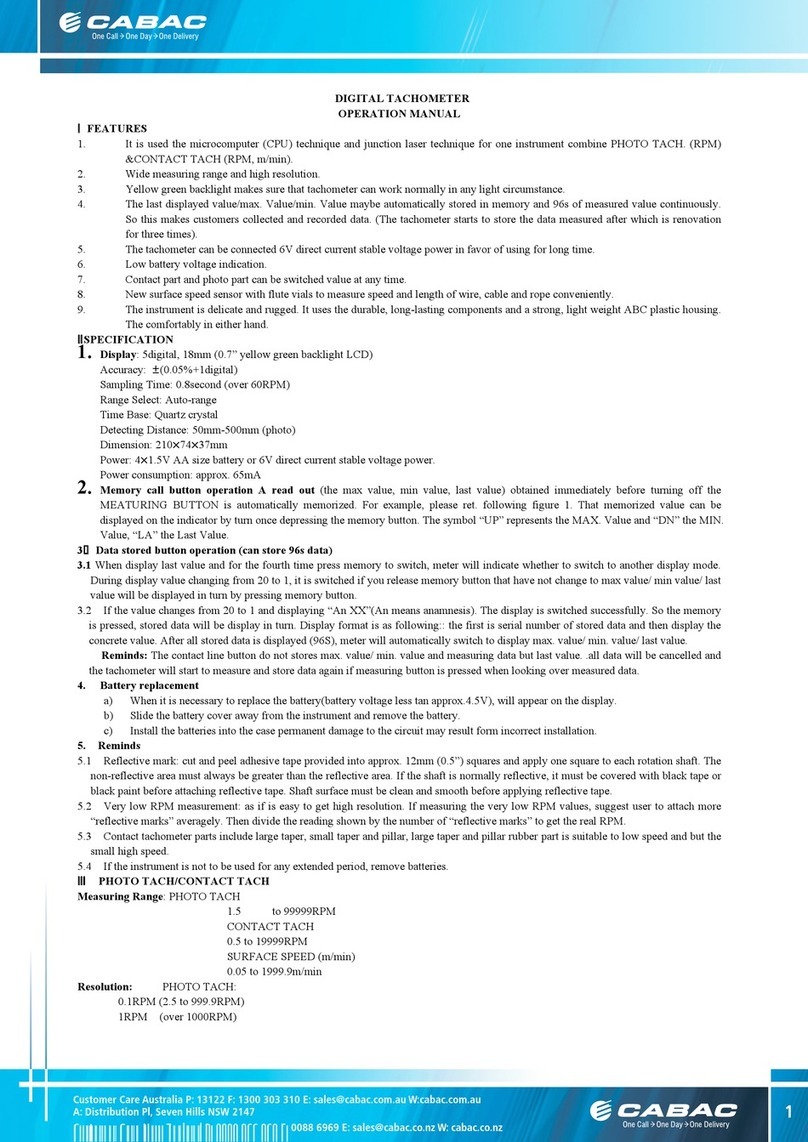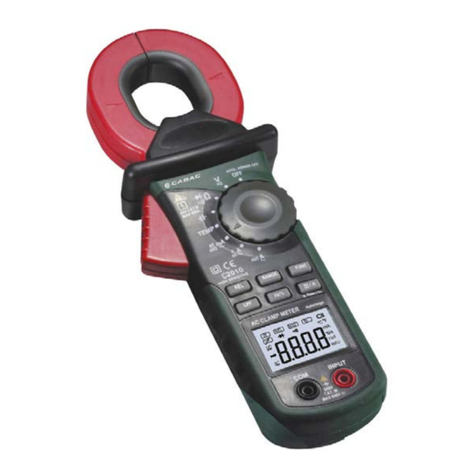
References Introduction / Product Package
ENGLSIH
5
After unpacking, check that the instrument is undam-
aged. The product package comprises:
1 pc Tester 3031
2 pcs 4mm test tip adapters
2 pcs CAT III/ 1000V test tip cover
2 pcs batteries 1.5V, IEC LR03
1 pc operating instructions
2. Safety Measures
The testers have been constructed and tested in
accordance with the safety regulations for voltage
testers and have left the factory in a safe and perfect
condition.
The operating instructions contain information and
References required for safe operation and use of
the tester. Before using the tester, read the opera-
ting instructions carefully and follow them in all re-
spects.
3. Danger of electric shock and other
dangers
Only to be used by a competent person.
Prove on a known live before and after testing.
To avoid an electric shock, observe the precautions
when working with voltages exceeding 120 V (60 V)
DC or 50 V (25 V) eff AC. In accordance with DIN
VDE these values represent the threshold contact
voltages (values in brackets refer to limited ranges,
e.g. in agricultural areas).
The tester must not be used with the battery
compartment open
Before using the tester, ensure that the test lead and
device are in perfect working order. Look out e.g. for
broken cables or leaking batteries.
Hold the tester and accessories by the designated grip
areas only, the display elements must not be covered.
Never touch the test probes.
The tester may be used only within the specied
measurement ranges and in low-voltage installations
up to 690 V.
The tester may be used only in the measuring circuit
category it has been designed for.
Before and after use, always check that the tester is in
perfect working order (e.g. on a known voltage sour-
ce).
The tester must no longer be used if one or more
functions fail or if no functionality is indicated.
It is not permitted to use the tester during rain or
precipitation.






























